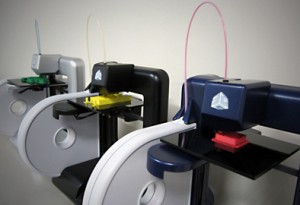There is no doubt about it. Technology has greatly enhanced how we carry out our businesses today. It’s just one of the beauties of the information age and for this, most of us cannot but thank modern communication technology for the opportunity to work and connect with the whole wide world!
But, think about this…
Is technology really a blessing to your business or you have become so obsessed with it that it has become a curse?
Have you become so engrossed and mesmerized by the tools of information technology that you have quickly forgotten why you bought them in the first place?
Have you forgotten that those tools were to leverage your time and help grow your business?
It’s really unfortunate that many online business entrepreneurs unintentionally have allowed modern technology gadgets and tools to suck the time out of their lives and add needless overhead to their businesses.
As a fellow web entrepreneur interested in your business success, I want to use this article to give you some basic tips on how you can truly make modern day technology a blessing in your online business. My desire is to ensure that you make every cent you will ever spend on your business count. Of course, this may not agree with many but that doesn’t really matter as long as you are able to gain with it. And so, I invite you to read this article all through.
The Story of the Japanese and the Texan
I don’t know if you have heard this story before, but I must say it is one that has a lot of lessons for us as regards what we want to discuss in this article. The story is about a Japanese man and a Texan who were passing through customs at an airport. The Japanese man was said to have with him two large suitcases and the Texan wanting to play the Good Samaritan, offered to help the Japanese move the suitcases toward the customs officers. Just as he was doing this, the Japanese man’s wristwatch started beeping and the man listened to the message and talked through a miniature speaker on the telephone in the wristwatch.
The Texan was amazed and right there offered to purchase the watch for $5,000. But the Japanese declined, saying the watch was not for sale.
The Texan now more interested in the Japanese man continued helping the man to push his heavy bags forward. A few seconds later the watch beeped again and this time the Japanese man opened the watch to receive an email message and then replied same using a small computer contained in the watch. The Texan, awestruck, again offered to purchase the watch but this time for $25,000.
“The watch is not for sale,” the Japanese man again replied.
Now, the Texan could not take the thought of the watch from his mind. To him that wristwatch is just want he wanted right now! And, then as he again helped push the enormous bags forward the watch beeped a third time. This time a long fax came out. The Texan, now more determined to own that watch, offered to purchase it for $300,000.
At this, the Japanese man turned to him and asked if he had the money there. The Texan quickly and eagerly wrote out a check for him. The Japanese man processed the check on the watch and then transferred the money into his Swiss bank account. After this, he took off the watch and handed it to the Texan and walked away.
As he was walking away the Texan realized that the Japanese man had left the enormous bags behind. Turning around he called out to him, “you’re forgetting your bags.”
“Those are not my bags,” the Japanese man shouted back. “They’re the batteries for your watch!”
Lol!
Alright, so how does this story relate to what I want to discuss with you here?
In many ways! Actually the moral of the story is that the Texan got caught on the wrong side of information technology! And so, my point here is that you should be careful that you don’t fall into the same trap.
To help you avoid this trap here a few tips on how you can make technology to work maximally for your online business.
1. Don’t Invest Your Time Or Money Except If It Adds Value
Every day new and enticing tools and software are being pushed into the market. You must beware that you’re not drawn by them. If you allow yourself to be obsessed or mesmerized, you will end up with gadgets that are nothing but fanciful toys.
Before investing your resources in any tool of technology, ask yourself if it will increase sales, help lower overhead or help in your business effectiveness. If any gadget fails in any of these areas then do not invest your time or money in it.
2. Do Not Become A Slave Of Technology
Many online entrepreneurs have allowed themselves to become slaves of online tools. I’m sure you are very much aware of the distractions we all face every day on the net. Online media, online games, online chatting etc, have become an obsession for many.
As an entrepreneur, you must understand that your time is valuable. You must therefore learn to master these tools so that they do not sabotage your productivity. If possible find ways of automating the use of these tools.
3. Use Inexpensive But Smart Tools Whenever Possible
Why rush to get any technological tool or gadget that hit the market? Do not be deceived, that tool may be the latest right now but with the rate these tools are being turned out, that latest gadget may just be obsolete even before you learn to enjoy its full potentials.
The solution? Decide on what you want done in your business and then go for the tools that will help you with that. The good thing is that there are smart tools that you can pick up online that will help you save both money and time and possibly increase your effectiveness.
4. If You Must Buy It Then Use It To The Fullest
This flows from #3 above. One thing that is clear is that most technological gadgets today can actually perform a whole lot of things. If you must invest your money and time on any of these, then learn to use it to the fullest. There are a hundred and one places online where you can learn about using these tools. There are free tutorials you can access online. Also blogs like the Technology Bloggers, can be of great help.
5. Don’t Get It Before You Need It
As an internet marketer I think I’m progressing in error here but I think your success as an entrepreneur is more important to me than any form of monetary gain.
If you’re subscribed to internet marketing newsletters or you spend a considerable time surfing the net, you will understand that every day new tools and “push button” software are being pushed at us left, right and center by smart internet marketers.
If you’re not focused, you’ll be tempted to believe that if you don’t own that latest tool or software, the world will just be passing you by!
But instead of falling into this trap, ask yourself if you indeed need that tool right now. If not don’t go for it. When you truly do need it, the right tool, and maybe something better, will be available for you!
Conclusion
In a rapidly changing world, technology is essential to effectively compete as a business however, not every tool of technology is worth your time. Spending your time and finance on technology for its sake, will end up as a curse instead of a blessing. Be disciplined and master your use of online tools and gadgets if you want your business to greatly benefit with the latest push button technology.
Over to You: Have you ever invested in a tool or gadget that you later regretted? Are you an online entrepreneur? How are you maximizing your use of technology for your online business? Share your experience with us in the comments below.




